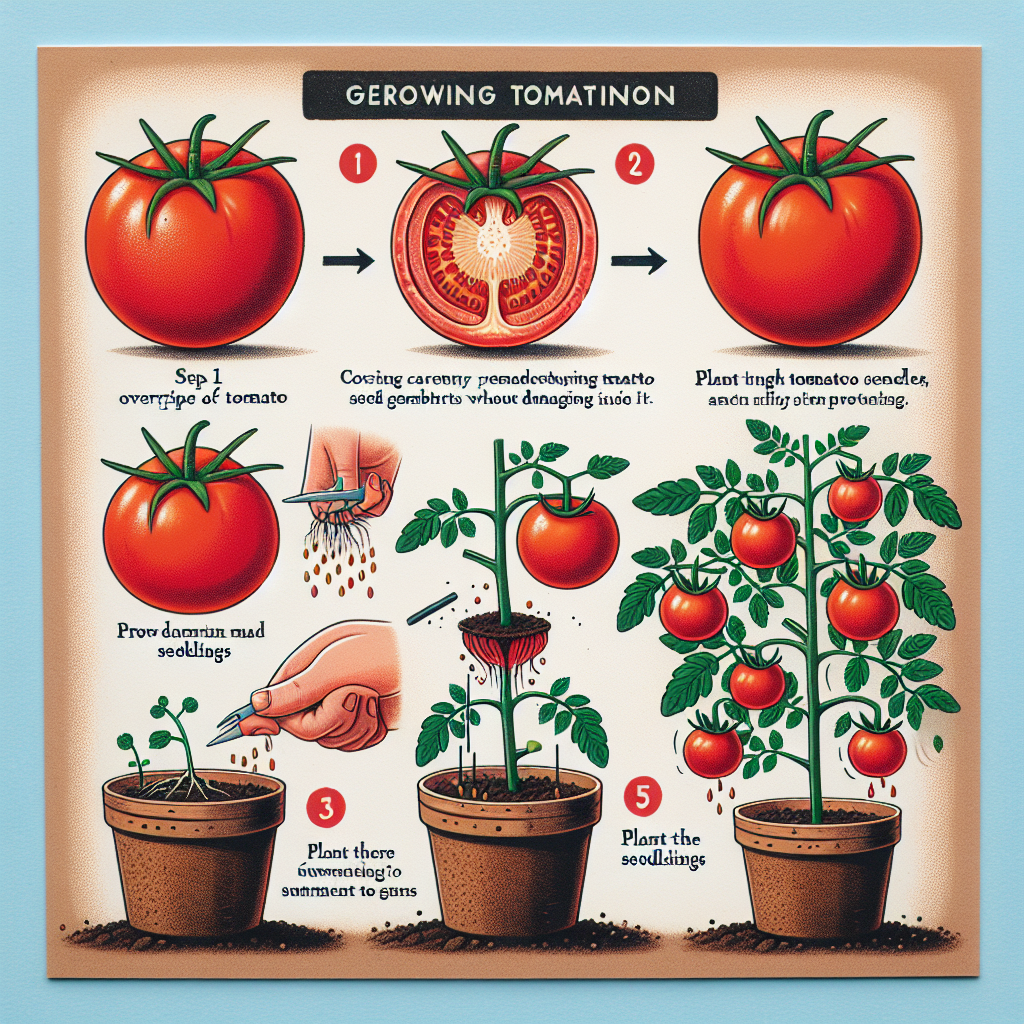
How to plant vivipary tomato
How to Plant Vivipary Tomato: A Gardener's Guide
Growing tomatoes is a rewarding experience for many gardeners, whether seasoned or novice. Among the various tomato varieties, the vivipary tomato stands out due to its unique growing characteristics and flavor. This guide will provide you with everything you need to know about planting, nurturing, and harvesting vivipary tomatoes, ensuring you'll enjoy a bountiful yield.
Understanding Vivipary Tomatoes
Before diving into the actual planting process, it’s essential to understand what vivipary tomatoes are. Vivipary refers to seeds that germinate while still attached to the parent plant. In vivipary tomatoes, this means that the fruit starts sprouting seeds even while still on the vine, creating a fascinating spectacle. These tomatoes are known for their exceptional taste and are often sought after for home gardens and local markets.
Characteristics of Vivipary Tomatoes
- Flavor: Vivipary tomatoes are often sweeter and more flavorful compared to conventional varieties.
- Appearance: They tend to be vibrant in color and can vary in size and shape.
- Unique Growth: Their ability to sprout before harvesting makes them an interesting choice for gardeners.
Choosing the Right Environment
To successfully grow vivipary tomatoes, you must choose an environment that simulates their native habitat. Here are some critical factors to consider:
Sunlight
Vivipary tomatoes thrive in full sun. Ideally, they should receive at least 6 to 8 hours of direct sunlight each day. A sunny spot in your garden is ideal for these plants to bloom and produce fruit.
Soil Type
The soil should be well-drained and rich in organic matter. Here’s how to prepare your soil:
- Test your soil's pH level; tomatoes prefer a range of 6.0 to 6.8.
- Incorporate compost or well-rotted manure to improve texture and nutrient content.
- Add perlite or sand to enhance drainage if your soil is too compact.
Temperature
Tomatoes are sensitive to temperature. Vivipary varieties prefer a day temperature of around 70°F to 85°F (20°C to 30°C) and nighttime temperatures above 50°F (10°C). Make sure to plant them after the last frost date in your area.
Planting Vivipary Tomatoes
Now that you understand their characteristics and environmental needs, let's dive into the planting process. **How to plant vivipary tomato** involves several steps, from starting seeds indoors to transplanting them outside.
Starting Seeds Indoors
It is advisable to start your vivipary tomato seeds indoors approximately 6 to 8 weeks before the last expected frost. Follow these steps:
- Choose high-quality vivipary tomato seeds from a reputable source.
- Fill seed trays or pots with a seed-starting mix; ensure they are pre-moistened.
- Plant the seeds about 1/4 inch deep in the soil.
- Cover them lightly and mist the surface to keep it moist.
- Place the trays in a warm, well-lit area or under grow lights.
Transplanting Outdoors
When seedlings are about 2 to 3 inches tall and have developed at least two sets of true leaves, it's time to transplant them outdoors:
- Harden off the seedlings by placing them outside for a few hours each day, gradually increasing their exposure to sunlight.
- Choose a spot in the garden where the soil temperature is above 60°F (15°C).
- Dig holes that are about 12-18 inches apart to allow for healthy growth.
- Carefully transplant the seedlings into the holes and water them well.
Nurturing Vivipary Tomatoes
Once your vivipary tomatoes are planted, proper care is crucial for a successful harvest. Here are some tips on nurturing your plants:
Watering
Consistent watering is key to preventing blossom end rot and ensuring strong growth. Aim for the following:
- Water deeply at least once a week, increasing frequency during hot weather.
- Use mulch to conserve moisture and suppress weeds.
- Avoid wetting the leaves to reduce the risk of fungal diseases.
Fertilizing
Fertilization will promote healthy growth and abundant fruit production. Consider the following:
- Use a balanced fertilizer during the growing season, following the product's instructions.
- Apply additional high-potassium fertilizer when fruits begin to set to enhance flavor.
Pruning and Support
As your plants grow, pruning and providing support will help in maximizing yield:
- Remove suckers (the small shoots that grow in the leaf axils) to direct energy into fruit production.
- Use cages or stakes to support the plants as they grow tall.
Pest and Disease Management
Like all tomatoes, vivipary tomatoes are susceptible to certain pests and diseases. Common concerns include:
- Aphids: Use insecticidal soap or plant beneficial insects like ladybugs.
- Blight: Ensure good airflow around plants and avoid overhead watering.
- Spider mites: Regular garden inspections will help catch infestations early.
Harvesting Vivipary Tomatoes
Knowing when to harvest your vivipary tomatoes is as important as the planting process. Here’s how to determine the right time:
Signs of Ripeness
Vivipary tomatoes should be harvested when they exhibit the following characteristics:
- A deep, vibrant color indicative of ripeness.
- A slight softness when gently squeezed.
- Fresh, fragrant aroma when held close.
Harvesting Technique
When it’s time to pick your tomatoes, follow these steps:
- Use garden scissors or pruners to cut the stem, avoiding damage to the plant.
- Handle the tomatoes with care to avoid bruising.
- Store harvested tomatoes in a cool, dark place for best flavor retention.
Conclusion
Understanding how to plant vivipary tomato is the first step toward enjoying this unique and flavorful variety. By carefully considering the right environment, following proper planting techniques, nurturance, and harvesting practices, you can enjoy a thriving garden filled with delicious vivipary tomatoes. Not only will they enhance your culinary endeavors, but they will also provide you with a remarkable gardening experience. Happy gardening!
By Guest, Published on August 9th, 2024